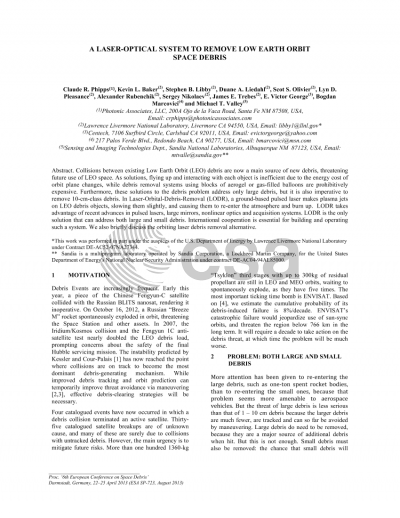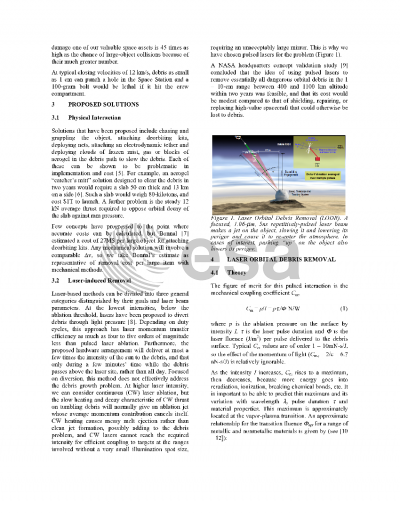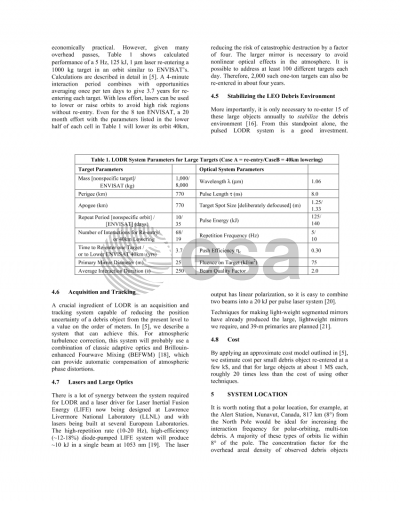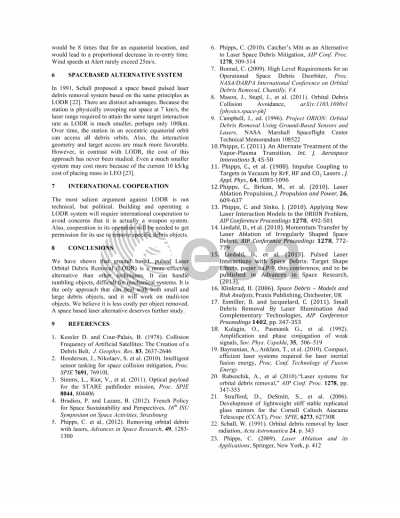Document details

Abstract
Collisions between existing Low Earth Orbit (LEO) debris are now a main source of new debris, threatening future use of LEO space. As solutions, flying up and interacting with each object is inefficient due to the energy cost of orbit plane changes, while debris removal systems using blocks of aerogel or gas-filled balloons are prohibitively expensive. Furthermore, these solutions to the debris problem address only large debris, but it is also imperative to remove 10-cm-class debris. In Laser-Orbital-Debris-Removal (LODR), a ground-based pulsed laser makes plasma jets on LEO debris objects, slowing them slightly, and causing them to re-enter the atmosphere and burn up. LODR takes advantage of recent advances in pulsed lasers, large mirrors, nonlinear optics and acquisition systems. LODR is the only solution that can address both large and small debris. International cooperation is essential for building and operating such a system. We also briefly discuss the orbiting laser debris removal alternative.
Preview






